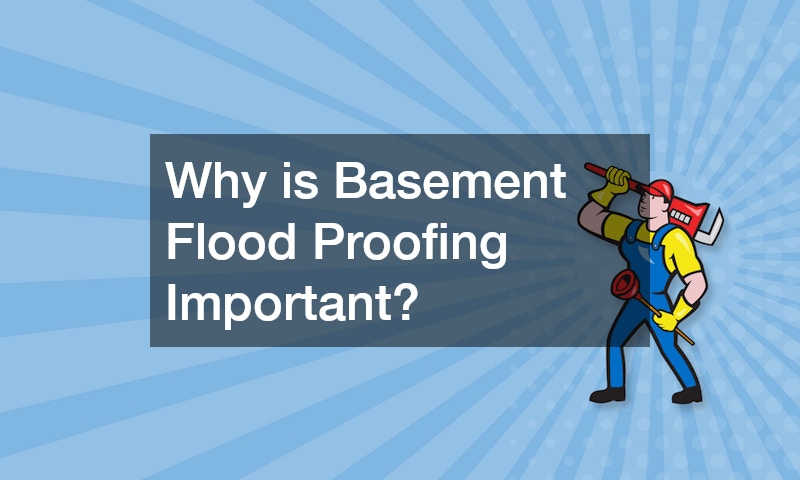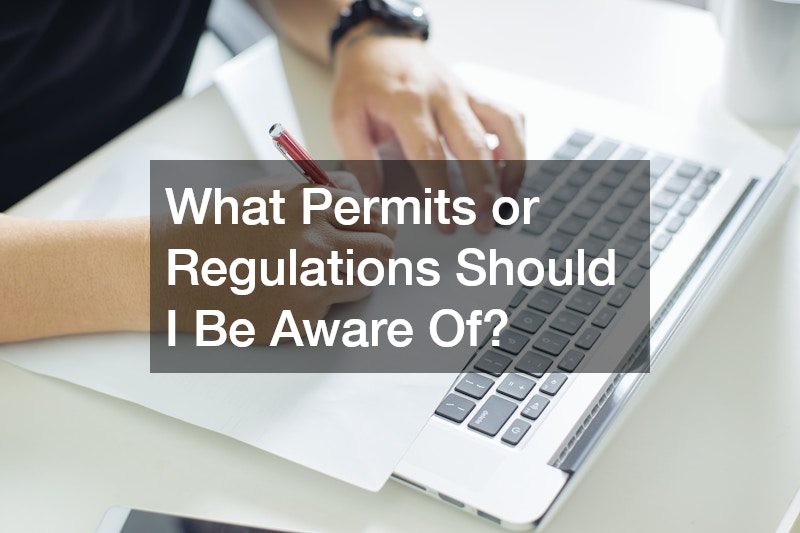When it comes to protecting your home from potential water damage, ensuring that you have a flood proof basement is essential. A flooded basement can result in many additional issues down the line. It is important to address potential issues before they arise and to have a plan in place for any risk of flooding that may occur. By following these 12 steps, you can minimize the risk of flooding and protect your property and valuables.
1. Why is Basement Flood Proofing Important?
Having a flood proof basement is crucial for several reasons. It helps reduce the potential risks associated with water damage, such as mold growth and structural damage. Additionally, investing in flood-proofing measures can lead to long-term cost savings by preventing expensive repairs and replacements.
By keeping your basement dry and free from water intrusion, you can protect your property and valuables from damage. Having a flood proof basement also plays a significant role in maintaining the health and safety of your household by reducing the risk of mold-related illnesses and creating a safer living environment.
Moreover, a flood proof basement can increase the overall value of your property. Potential buyers are more likely to be attracted to a home with a secure basement that is protected from flooding, making it a valuable investment for both your present and future needs.
2. What Signs Indicate My Basement is at Risk of Flooding?
There are several visible signs that may indicate your basement is at risk of flooding, such as water stains on walls or floors, musty odors, or visible cracks in the foundation. However, some threats may not be immediately apparent, so it’s essential to be aware of these invisible indicators.
It’s essential to evaluate your basement’s history of flooding or water damage, as past incidents can be a strong indicator of future risks. Regularly inspecting your basement for signs of potential flooding, such as dampness or standing water, can help you identify and address issues before they escalate.
For a comprehensive assessment of your basement’s flood risk, consider consulting a professional. They can provide expert insights and recommendations tailored to your specific situation, helping you take proactive steps to minimize the risk of flooding. Investing in a professional’s opinion can save you time and money in the future, not to mention the additional issues a basement flood can cause.
3. What Permits or Regulations Should I Be Aware Of?
Before embarking on any flood-proofing projects for your basement, it’s crucial to understand the local building codes and regulations that may apply to your area. Consulting with local officials or a reputable plumbing company can help you navigate the permitting process and ensure compliance with the necessary regulations.
Securing the required permits for your flood-proofing projects is essential to avoid any legal issues or potential fines. Additionally, staying informed about environmental regulations related to water management and drainage can help you make informed decisions that benefit both your property and the environment.
It’s important to stay updated with any changes in regulations that may impact your flood-proofing efforts. By staying informed and following the necessary protocols, you can ensure that your basement flood-proofing projects are conducted in a safe and compliant manner.
4. How Do I Properly Seal My Basement?
Properly sealing your basement is a critical step in flood-proofing your home. Choosing the right sealing materials, such as waterproof sealants or coatings, can help prevent water intrusion and protect your basement from potential flooding.
When applying sealants to your basement walls or floors, it’s essential to follow the manufacturer’s instructions carefully to ensure proper adhesion and durability. Addressing any cracks or leaks in the foundation or walls is crucial for maintaining the integrity of the seals and preventing water seepage.
Maintaining the integrity of your basement seals over time is essential for long-term flood protection. Regularly inspecting and resealing any areas that show signs of wear or damage can help extend the lifespan of your seals and keep your basement dry and secure.
5. What Role Does Landscaping Play in Flood Prevention?
Effective landscaping can play a significant role in preventing basement flooding. Properly designed drainage solutions, such as French drains or rain gardens, can help redirect water away from your home and basement, reducing the risk of water intrusion.
Using native vegetation in your landscaping can help absorb excess water and prevent runoff, reducing the amount of water that may seep into your basement. Grading and slope management are essential for ensuring that water flows away from your home and basement during heavy rainstorms, so that you have a flood proof basement.
Regular maintenance of your landscape features, such as cleaning out gutters and downspouts, can help prevent blockages and ensure that water is effectively diverted away from your home. By investing in landscaping that promotes proper water management, you can create a more flood-resistant environment for your property.
6. How Can Gutters and Downspouts Help?
Properly installed gutters and downspouts are essential for directing rainwater away from your home and basement. Ensuring that your gutters are correctly positioned and free from blockages can help prevent water from seeping into your basement and causing flooding.
Regular cleaning and maintenance of your gutters are crucial for preventing backups and obstructions that can lead to water damage. Consider installing innovative gutter solutions, such as gutter guards or oversized downspouts, to handle heavy rainfalls and prevent overflow.
Connecting your downspouts to proper drainage systems, such as French drains or stormwater sewers, can help further prevent water from pooling around your home and basement. By investing in proper gutter and downspout maintenance, you can reduce the risk of basement flooding due to water intrusion, helping to create a flood proof basement.
7. What is the Best Way to Access Sump Pump Installation?
Installing a sump pump in your basement is an effective way to prevent flooding and water damage. There are different types of sump pumps available, including pedestal pumps and submersible pumps, each with unique features and benefits.
Choosing the right sump pump for your basement depends on factors such as the size of your basement, the depth of the water table, and the frequency of flooding in your area. Proper installation of a sump pump involves positioning it in the lowest part of your basement and ensuring that it is connected to a drainage system that carries water away from your home.
Regular maintenance of your sump pump is essential for ensuring optimal performance and preventing malfunctions. It’s crucial to inspect your sump pump regularly, test its operation, and clean out any debris that may obstruct its function. If you’re unsure about installing a sump pump yourself, consider hiring a professional plumbing company or HVAC company to handle the installation for you.
8. How Do I Install French Drains?
French drains are a popular drainage solution for creating a flood proof basement. These drains consist of a perforated pipe surrounded by gravel or rock, which helps redirect water away from your home and basement to prevent water intrusion.
Installing French drains involves excavating a trench around the perimeter of your basement and laying the perforated pipe at the bottom of the trench. The pipe is then covered with gravel or rock to allow water to flow freely into the drain and away from your home.
Regular maintenance of your French drain is essential for ensuring that it continues to function properly. Inspect the drain periodically to check for clogs or blockages, and clear out any debris that may obstruct the flow of water. By properly installing and maintaining your French drain, you can help protect your basement from flooding and water damage.
9. How Can a Dehumidifier Help Prevent Flooding?
Installing a dehumidifier in your basement can help reduce the moisture levels in the air, preventing mold growth and water damage. Choosing the right dehumidifier for your basement depends on factors such as the size of the space and the level of humidity present.
Proper placement and installation of the dehumidifier are crucial for maximizing its effectiveness. Position the dehumidifier in a centrally located area of your basement and ensure that it has proper ventilation to allow for optimal airflow. Regular maintenance of the dehumidifier, such as emptying the water reservoir and cleaning the filter, can help ensure that it operates efficiently.
Regularly monitoring the performance of your dehumidifier is essential for ensuring that it is effectively reducing humidity levels in your basement. Signs that your dehumidifier is working effectively include lower humidity levels, reduced musty odors, and a more comfortable living environment.
10. How Do I Address Existing Water Damage?
If your basement has already experienced water damage, it’s essential to address the issue promptly to prevent further damage and mold growth. Begin by identifying the extent of the damage, including any areas of standing water, dampness, or visible mold.
Removing water and drying out your basement is crucial for preventing mold growth and further damage to your property. Use a wet vacuum or pump to remove standing water, and use fans or dehumidifiers to dry out damp areas. Repairing any surfaces or structures that have been damaged by water, such as drywall or flooring, can help restore your basement to its original condition.
Preventing mold and mildew is essential for maintaining a healthy living environment and preventing respiratory issues. Use mold-resistant cleaning solutions to disinfect surfaces affected by water damage, and consider hiring a professional restoration service to handle extensive water damage and mold remediation.
11. What Materials Should I Use for Basement Renovation?
When renovating to create a flood proof basement, it’s essential to choose materials that can withstand moisture and water intrusion. Opt for water-resistant or waterproof materials, such as vinyl flooring or tile, that are durable and easy to clean.
Choosing flooring that can withstand moisture is essential for preventing water damage and mold growth. Consider using concrete floor coatings or tile flooring from reputable tile flooring companies for a durable and waterproof flooring solution. Selecting wall treatments, such as mold-resistant paint or moisture-resistant drywall, can help prevent water damage and maintain a healthy indoor environment.
Investing in durable furnishings and decor choices for your basement can help minimize the risk of damage from potential flooding. Choose furniture made from moisture-resistant materials, such as plastic or metal, and avoid placing valuables or electronics directly on the floor to prevent water damage.
12. How Often Should I Inspect My Flood Prevention Measures?
Regular inspections of your flood prevention measures are essential for maintaining a flood proof basement. Create and follow an inspection schedule that includes checking for signs of water damage, mold growth, or moisture intrusion at least once a year. Keep track of when you should perform an inspection using the seasons or other existing patterns in your schedule.
Signs that indicate an inspection is needed include musty odors, visible water stains, or increased humidity levels in your basement. During inspections, look for any cracks or leaks in the foundation, walls, or floors, and address them promptly to prevent water intrusion. Also keep an eye out for potential issues that may arise, such as a drain backing up.
Updating your flood prevention measures as needed can help ensure that your basement remains protected from potential flooding. Consider consulting with a repiping plumbing contractor or an electrician to inspect your plumbing system or electrical components for any signs of water damage or leaks that may increase the risk of flooding. They can also help with other items such as water heater repair, and inspecting your sewer line or septic tank.
Conclusion
Protecting your basement from flooding is essential for safeguarding your property and valuables from water damage. You can protect not only your belongings but your property value by taking steps to ensure you have a flood proof basement. Professionals can offer advice and services to help minimize your risk of flooding. They can also make you aware of potential issues that you may not be aware of in your basement. Investing time and money in prevention now is essential to save you from the risk of a flooded basement in the future. By following these 12 steps to create a flood proof basement, you can minimize the risk of flooding and create a safe and secure living environment for you and your family.




